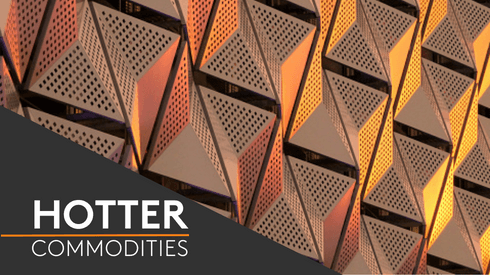The wise men of the Victorian age established a model for the LME that has prospered mightily, powering through world wars, depressions and booms to consolidate its position as the world’s premier pricing mechanism for non-ferrous metals.
So well done to everyone involved. But are cracks beginning to appear?
A recent calculation by Reuters suggested that although the LME’s turnover in copper increased year-on-year yet again in 2012, its relative market share actually decreased, with reference to Nymex’s Comex contract and Shanghai’s copper futures.
The LME still clearly dominates the trade, and perhaps a drop from 71% to 66% market share over the year is no more than a statistical wobble. I must also add, in fairness, that the LME states that in December, its market share – including minis – was indeed 71%.
However, the LME needs to be careful about this.
The rumblings of discontent engendered by the state of the warehousing system are not going away. Indeed, I have heard criticisms of late not only from consumers, taxed about the premium question, but also from traders, who have told me they consider that Nymex offers greater transparency.
This is important, because one of the fundamental requirements of a market is that it should offer openness and transparency.
Ironically, that great bastion of transparency, the open-outcry ring, may itself be contributing to opacity here, as the split personality of closes – with simultaneous trading on the floor and on the screen – can contribute to the lack of clarity.
Warehousing
Rumours abound that Nymex may be considering expanding its warehouse network as a direct result of the perceived failings of the LME in this area.
And It is not only within the metals business that there is disquiet over warehousing. The wider financial community is becoming aware that an increasing amount of the world’s supply of refined metal is being locked away under the ownership of Wall Street banks and powerhouse international traders.
As I have said before on this subject, this is not an attack on the warehouse owners or banks, who simply play the game according to the rules as they find them.
This perception does put pressure on the LME, however; pressure which it is difficult, under current rules and in the current global economy, to alleviate.
Nymex can take advantage of this situation.
I question their rumoured thoughts of Chilean warehouses, because, to go back to the Victorian founders, I think the logic of keeping warehouses broadly in net consumption areas is inescapable. The concept of expansion is timely, nonetheless.
Regular readers of this column will recall that a while ago I suggested that with the LME focussed so heavily on its new pastures in the East, there was a potential gap for Nymex to exploit. I still believe that.
A brave new world
It’s also worth looking at the relationship between the LME and its members in the brave new world of 2013.
In the past, in the days of a member-owned exchange, there was no conflict of profitability. I can recall, when running a broker, that there was a common interest between me and the executive of the market in seeing my company prosper. Now, that relationship is more nuanced.
Of course, the executive still have the interests of their members at heart. But they are now working for the shareholders of HKEx and their first consideration has to be to try and ensure that the latter see an adequate return on the funds spent on the LME acquisition.
That amount was so large – and I’m by no means alone in the business in thinking that it verged on a fairytale number – that it is difficult not to believe that when a dip in business comes, it will create internal conflicts.
It was the deal of the year last year, but it may leave an opportunity for Nymex to exploit the tensions it has created in this one.
While economies remain flat and warehousing drives the business, it’s going to be a wild ride.
Lord Copper
editorial@metalbulletin.com





